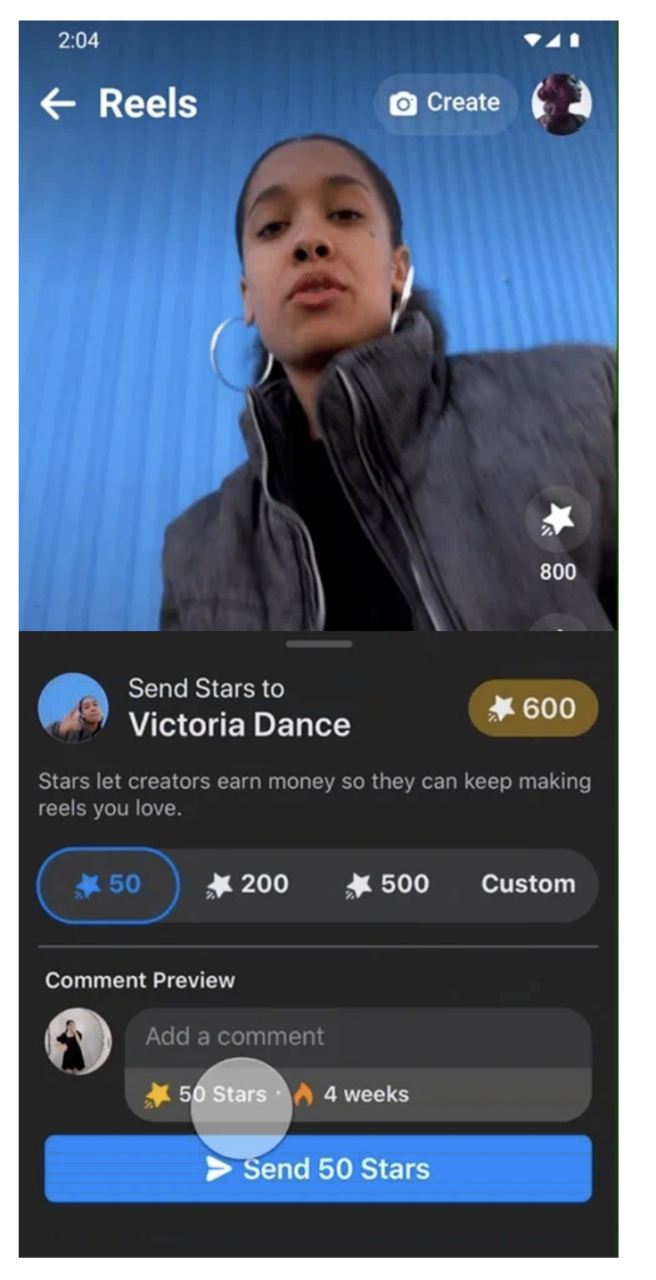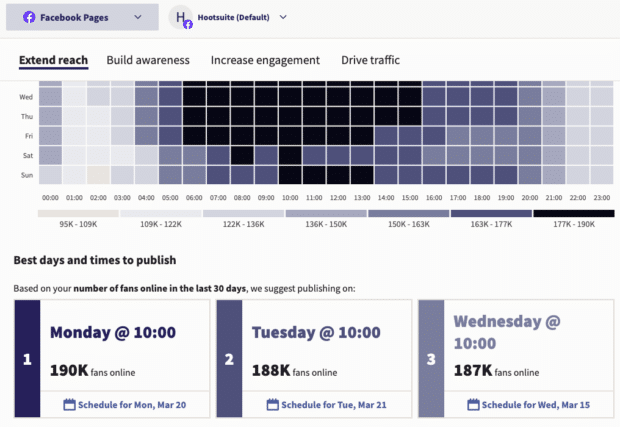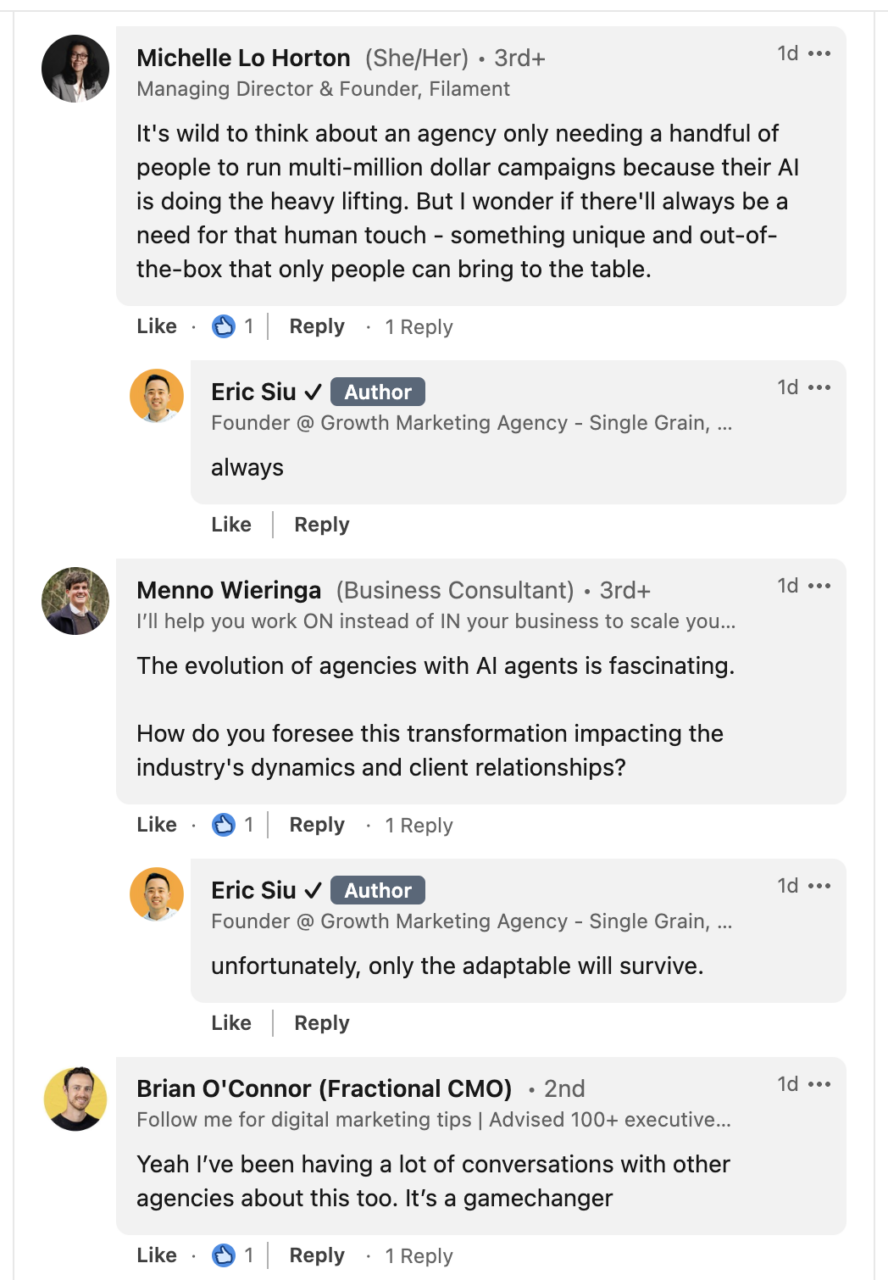Digital marketing in 2024 already feels like a never-ending roller coaster. Just when you think you can anticipate the twists and turns, lo and behold, a new track is laid.
But we all know that modern marketing is about staying on your toes and keeping your eyes peeled for the next big thing. With a bunch of fresh 2024 marketing trends in our back pocket based on millions of data points, we’re here to break down what’s shaking up social media that you should be aware of.
1) The Impact of External Linking
Data Point: Linking out to external sites now reduces reach by 219%, compared to 74.51% three years ago.
Turns out, sharing links to stuff outside the social media playground isn’t as cool as it used to be. The drastic reduction in organic reach due to external linking on social media platforms underscores a significant shift in platform algorithms.
Previously, the penalty for linking out was less severe, but now, with a 219% decrease in reach for posts that link externally compared to 74.51% three years ago, it’s evident that platforms are keen on keeping users engaged within their ecosystems.
Key Takeaway: Social platforms are intensifying efforts to keep users on-site. Marketers should explore innovative ways to deliver value within the platforms while subtly guiding users to external content when necessary.
2) The Evolution of Short-Form Video Content
Data Point: Short-form videos now have 32.18% more reach, down from 54.77%.
Remember when short, snappy videos were all the rage? Well, they still are, but the situation’s changed a bit. Initially, platforms aggressively promoted short-form videos, leading to a higher reach:

However, as the novelty has worn off, the preference has shifted slightly towards longer short-form content, with the ideal length increasing from 13 seconds to an average of 44 seconds.
Key Takeaway: While still effective, the golden era of short-form content is maturing. Marketers should invest in quality over quantity, creating more engaging and slightly longer video content that captivates audiences.
3) The Role of Engagement in Organic Reach
Data Point: Posts with 10 or more comments now achieve 194.26% more engagement, a decrease from 285.32%.
Getting a bunch of comments still gives your posts a boost, but it’s not the free-for-all it once was. Engagement, particularly through comments, has long been a cornerstone of successful social media strategies.
The data tells us there’s added significance with comments as they relate to organic reach and engagement, with a current increase of 194.26% for posts with 10 or more comments, down from 285.32%.
It’s basically saying that while engagement remains important, the quality of interaction now plays a more significant role than mere quantities of comments.
Key Takeaway: Genuine engagement remains crucial, though its impact has diminished. Encouraging meaningful conversations, rather than focusing on comment quantity, can enhance content reach and engagement.
4) Posting Frequency and Content Quality
Data Point: Optimal posting frequency has moved from three times a day to 1-2 times daily.
The optimal posting frequency has reduced from three or more times a day to just 1-2 times daily.

Why?
Social platforms are starting to prioritize quality over quantity. Look at how much less Jimmy Donaldson (Mr. Beast) has been posting to his channel so he can concentrate more on the quality of his content, versus just pumping out garbage into the ether.
This change reflects platforms’ efforts to improve user experience by prioritizing high-quality content that engages users more deeply, rather than overwhelming them with frequent, less impactful posts.
Key Takeaway: Content quality is critical in 2024. There’s probably nothing more important than quality in your content. Marketers should focus on crafting fewer, but more impactful posts, ensuring that each piece delivers significant value.
5) The Decline of Organic Reach
Data Point: Organic reach has declined by roughly 61.83% over the last three years.
Organic reach has taken a nosedive, plummeting by about 61.83% across the board. What’s a marketer to do? Diversify, that’s what.
The decline we’re seeing spreads across all major platforms, reflecting a broader trend toward saturated feeds and more sophisticated algorithms that prioritize user experience over promotional content.
Key Takeaway: The decreasing organic reach is a clear sign that marketers need to employ a diversified digital marketing strategy that includes paid campaigns, influencer collaborations and a strong emphasis on SEO.
6) Engaging with Comments
Data Point: Responding to comments now leads to a 12.74% increase in reach, down from 39.57%.
Previously, any engagement could significantly boost reach, but the current data shows a more modest increase of 12.74% in reach for those who actively respond to comments, a decrease from almost 40%. This tells us that platforms are likely valuing the quality and relevance of interactions more than the sheer volume.

Key Takeaway: While the impact of engagement has waned, responding to comments can still positively affect reach. Authentic interaction remains key to fostering community and loyalty.
7) Cisco’s Employee Influencer Strategy
Data Point: Cisco is training 83,000 employees to become LinkedIn influencers.
Cisco’s initiative to train 83,000 employees to become LinkedIn influencers is a pioneering approach to organic reach and brand ambassadorship. By empowering its workforce to become influential voices on social media, Cisco aims to amplify its brand presence and engage with a broader audience more authentically.
It’s a clever move, turning employees into official voices for the brand and cutting through the noise with real, relatable content.
Key Takeaway: There’s untapped potential within organizations, and they’re quite possibly walking through the halls of your business already. Leveraging employees as brand ambassadors can significantly extend a brand’s reach and authenticity on social platforms.
8) Organic Traffic Across Social Networks
Data Point: The analysis of 9,488 sites revealed varied organic traffic from different social networks.
Despite their vast user bases, not all social platforms are equally effective in generating organic traffic to external sites. Platforms like YouTube and LinkedIn lead in driving traffic, outperforming others like Facebook and Instagram, which have larger user numbers but yield lower traffic.
This tells us that choosing the right platforms based on specific marketing objectives and audience behaviors, rather than just platform popularity, is vitally important.
Key Takeaway: The ability of a platform to drive website traffic does not directly correlate with its user count. Marketers should prioritize platforms based on their specific goals and the nature of their audience.
Final Word on 2024 Marketing Trends You Should Know
The biggest things that jumped out at us is how much it matters to create really great content that people actually want to read and share, getting savvy with how we use our teams to boost our brand, and to really analyze what makes each social media platform tick.
These marketing trends shout loud from the hilltops that we’ve got to stay on our toes, always ready to mix things up and keep our content fresh and real. What we used to rely on to perform well may not be the case anymore, and previously discarded tactics are creeping back into relevancy.
For marketers ready to roll with these changes and put their heart into creating content that resonates and sparks real conversations, there’s a good chance their brand(s) will stand out in the mix.
If you’re ready to level up your brand awareness across the internet, Single Grain’s digital marketing experts can help!👇
For more insights and lessons about marketing, check out our Marketing School podcast on YouTube.
Data points in this post are sourced from NP Digital in this video.



